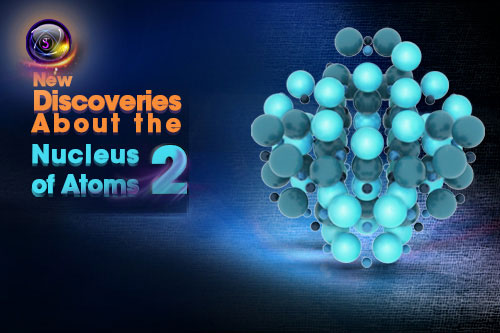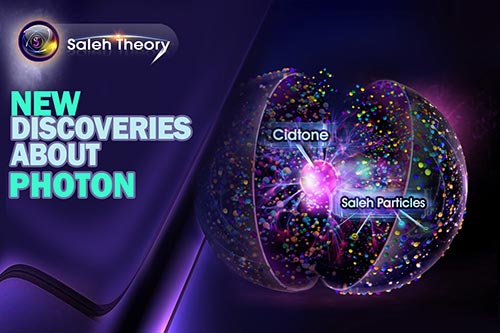
New Discoveries about Photon
1. Sub-Photon and Its Components
2. Photon or the Superstring
3. The World of Photon, Its Energy, Probable Model,…
4. Up-Photon (From Photons to Electrons)
5. Photon, the Primary Building Block of Electrons, Protons and Neutrons
6. Photon, Foundation of the Theory of Everything
1. Sub-Photon and Its Components
Whenever we look at the sky at night, we see small areas that shine in the sky, and whenever we look at these areas with a macroscopic view, each of them is a set of galaxies; that each galaxy is a set of systems, and each system has tens of planets and each planet has tens of moons. If we consider the mathematical model, at least ten to the power of 20 to ten to the power of 30 kilometers can be considered for the radius of the universe, which over time (according to the expansion) can go up to ten to the power of 100 kilometers.
On the other hand, if we look at the radius of a photon that is about ten to the power of minus 17 meter, there are smaller numbers than that number like ten to the power of minus 50 to ten to the power of minus 100 meter, which we can have physical and mathematical interpretation from these numbers, like the volume of one photon that is about ten to the power of minus 50 cubic meter. According to these contents, in mathematical models, ten to the power of minus 10, ten to the power of minus 50, and ten to the power of minus 100 cubic meters also have mathematical and physical validity and status. So for photons, the smaller components up to ten to the power of minus 100 cubic meters can be considered and in fact it can be assumed that a photon can have the structure like a galaxy or a system. Components those are located in other components.
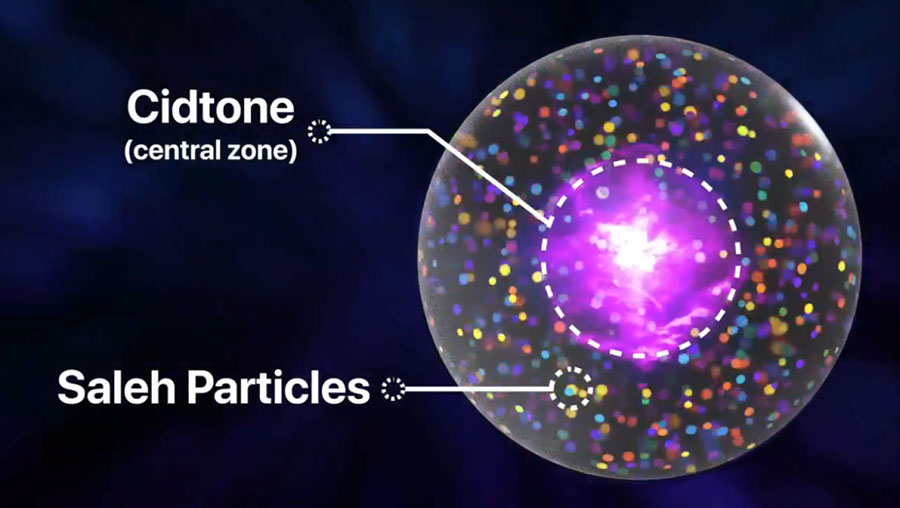
According to the proposed figure for the photon, the internal structure of the photon can be considered in such a way that the Cidtone is like a sun and the Saleh particles (colored particles) are like planets orbiting the sun.
2. Photon or the Superstring
Given that the genetrix of photon is the electron and the photons emit from the electrons and continue on their trajectory, in fact, the trajectory of each photon depends on the type of motion of the electron in which is transferred to photon. Electrons usually have two main motions; the first one is around the nucleus and the other one is around themselves. On the other hand, the photon also has a rotational motion around itself. When a photon emits from an electron, its motion is the resultant of these three types of motions. Photon obtains its wavelength from the motion of electron around the nucleus. The combination of the rotational motion of electron around itself and the rotational motion of photon around itself creates a zigzag-like motion in a closed ring, which can be called the internal motion of the photon. As a result, the motion of photon when leaving the electron can be divided into three motions:
I. Rotational Motion around Itself (with 1 degree of freedom)
II. Zigzag or Internal Motion (with 5 degrees of freedom)
III. External Motion of the Photon (with 5 degrees of freedom)
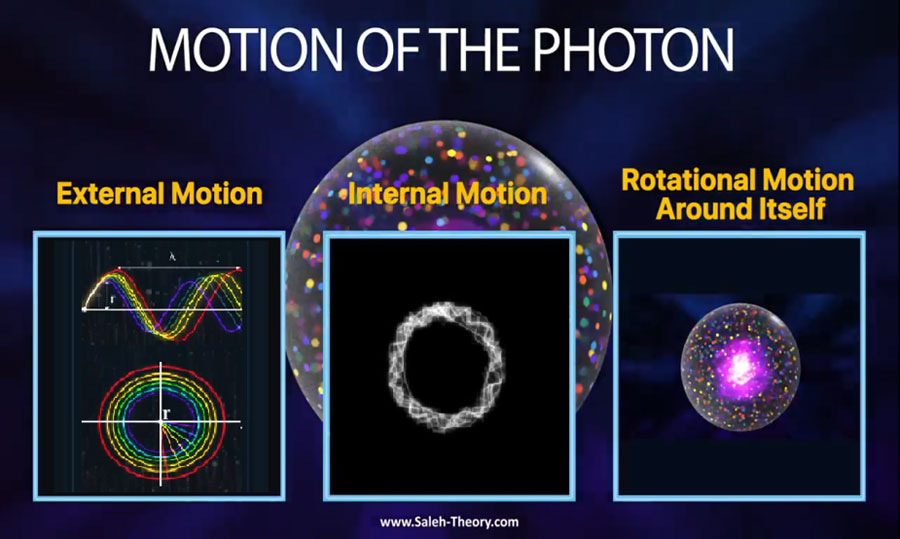
In total, each photon can have a motion with 1+5+5 degrees of freedom, which in fact can be said that the photon is the super string as we mean.
3. The World of Photon, Its Energy, Probable Model,…
To calculate the energy of each photon, it is enough to consider the following formula:
(Initial Energy = Rotational Energy + Translational Energy)

The above relation explains that the initial energy of a photon (⚊12mc2)is divided into two parts at the moment that it is separated from the electron: rotational energy (⚊12mr2ω2) and translational energy (hϑ).
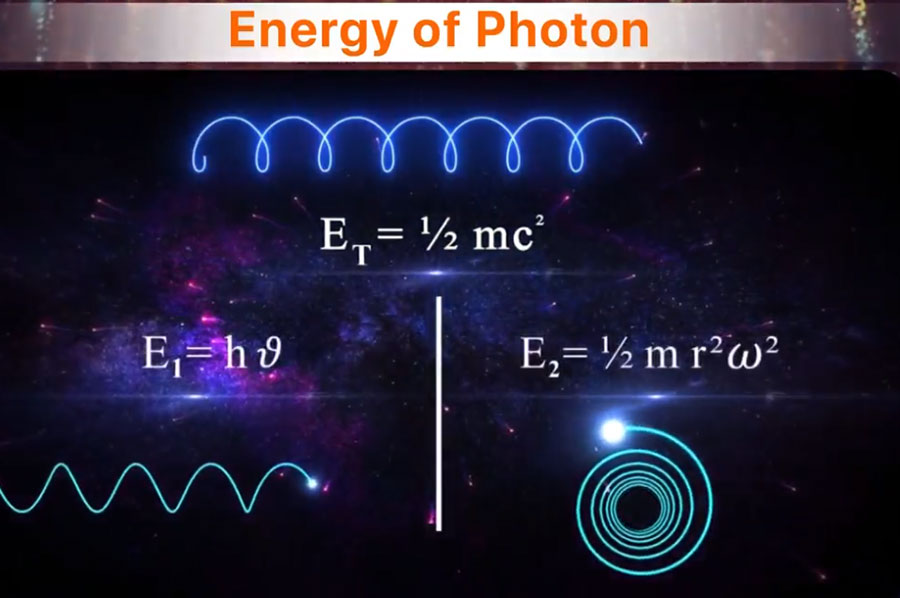
In fact, this equation is always valid and all parameters are based on the properties of a photon; includes: mass, velocity, rotation radius, angular velocity and frequency of photon.



